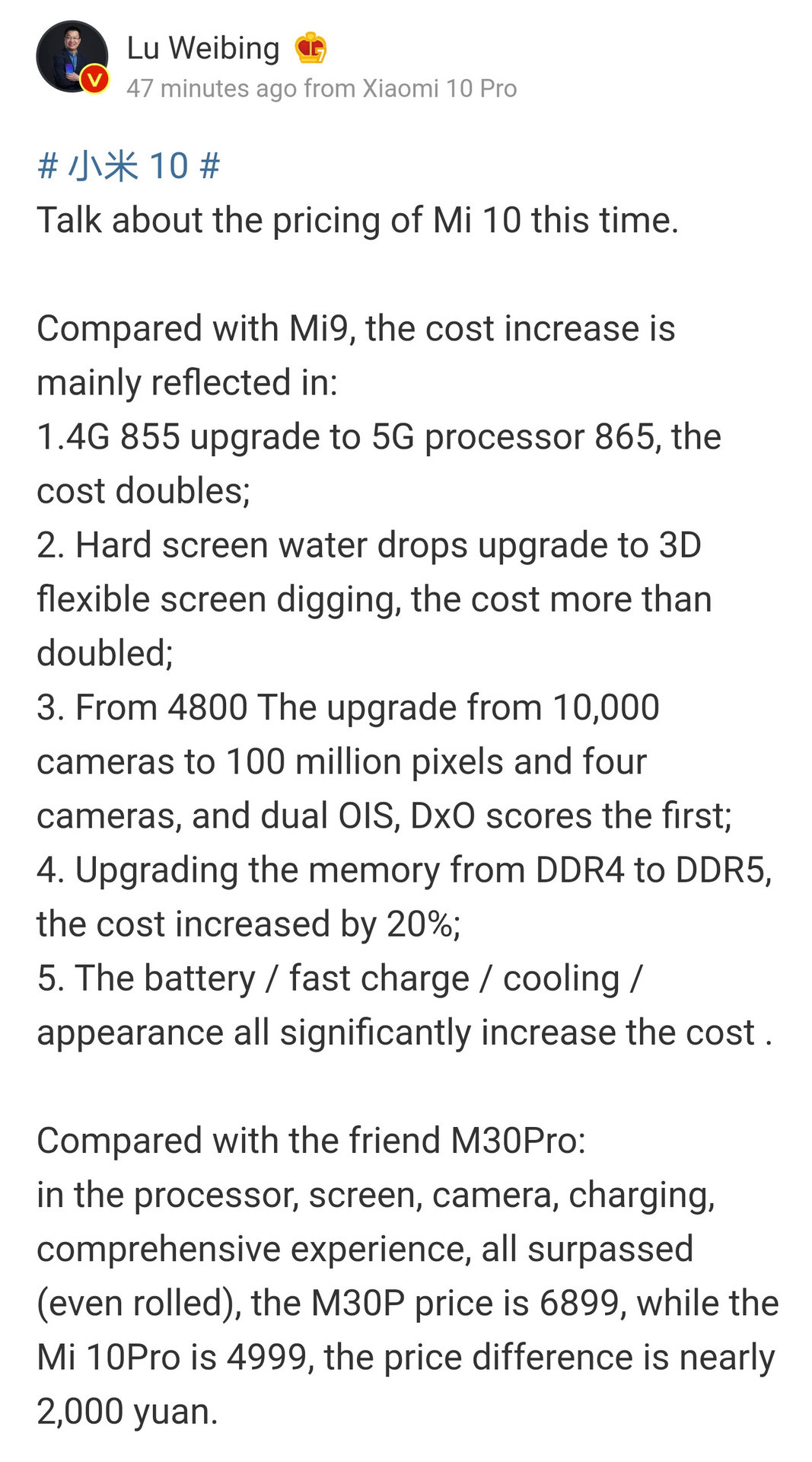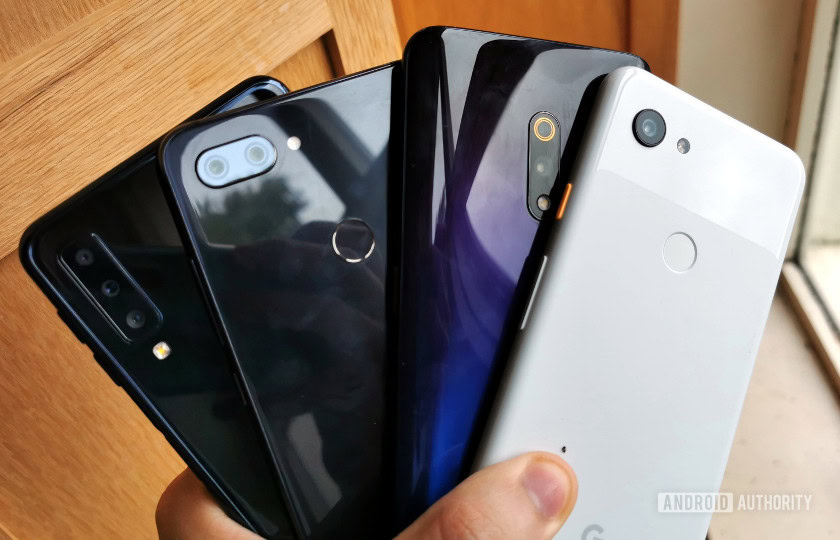Affiliate links on Android Authority may earn us a commission. Learn more.
Here's why Xiaomi Mi 10 is significantly more expensive than Mi 9
February 13, 2020

Xiaomi’s Mi flagships have traditionally been among the most affordable flagships around, offering high-end internals, competitive cameras, and solid designs.
The brand-new Mi 10 and Mi 10 Pro buck the trend however, offering a starting price of 3,999 yuan (~$573) for the Mi 10 and 4,999 yuan (~$716) for the Pro version. That makes it at least 1,000 yuan (~$143) more expensive than the Xiaomi Mi 9 at its Chinese launch.
Related: Xiaomi Mi 10 series pricing and availability: Here’s what to expect
Xiaomi executive and Redmi general manager Lu Weibing has taken to Weibo to justify the Mi 10 series pricing though, listing a variety of reasons for the increased price.

One of the biggest reasons cited by the Xiaomi representative is the switch from a 4G-enabled Snapdragon 855 chipset to a Snapdragon 865 and 5G modem. In fact, Weibing says the cost for the new chipset and modem doubled the cost of the Snapdragon 855. Meanwhile, Xiaomi’s Lei Jun was quoted as saying by Abacus News that the Snapdragon 865 and 5G modem adds ~$70 extra to the final price — a big chunk of change.
Another major reason for the price increase came from the switch to a dual curved 90Hz OLED screen with a punch-hole, with Weibing saying the cost more than doubled compared to the Mi 9’s screen. Furthermore, RAM saw a 20% cost increase on the Mi 10 series owing to the use of LPDDR5 memory instead of LPDDR4.

Finally, the Xiaomi executive says the addition of more cameras, a 108MP camera, dual OIS, a bigger battery, faster charging, cooling tech, and design-related costs all added up to make for a significantly pricier Mi series flagship.
But the Redmi GM insists that Xiaomi’s new phones can go toe to toe with the likes of the Mate 30 Pro, saying they have better chips, faster charging (at least the Pro model has faster wired charging), higher resolution primary camera, and a better screen. To be fair, the Mate 30 Pro has a better ultra-wide camera on paper, water resistant design, and 3D face unlock. Still, it’s clear that Xiaomi is gunning for a more premium segment with its new flagships.
Thank you for being part of our community. Read our Comment Policy before posting.